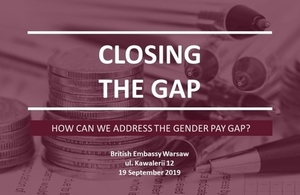The Defence Technology Framework (DTF) and Defence Innovation Priorities (DIP) – published today – set out how defence will address the accelerating pace of technological change in the years to come. This includes identifying technologies that can revolutionise defence as well as outlining a more sophisticated relationship with industry.
The documents respond to the Modernising Defence Programme’s three central objectives: To mobilise to tackle today’s challenges; modernise to meet future threats; and transform to become an agile and innovative organisation.
Defence Secretary Ben Wallace said:
We live in an era of extraordinary technological change and we must make sure we are harnessing the power of innovation by working as efficiently and effectively with industry as possible.
Our transformed approach to using and procuring technology will not only help us secure our military advantage, but will help drive prosperity and create jobs across the country.
Making the announcement at the DSEi conference in London today, Vice-Chief of the Defence Staff Admiral Tim Fraser will say:
Both the Framework and Priorities will not only guide the approaches of our major industry suppliers, but of SMEs, entrepreneurs and academia and our public sector partners and international allies.
They give us a clear strategic roadmap and will shape our investment in the future.
The Defence Technology Framework sets out Defence’s assessment of the technology areas with the greatest potential to transform military capabilities.
The ‘seven families’ of technology – from Artificial Intelligence and advanced materials to energy storage and cutting-edge sensors – have the potential to revolutionise defence and will shape collaboration with international partners and the UK’s world-class academic and industrial base.
Possible applications include deployed 3D printing, space tracking and communications, enhanced Intelligence, Surveillance, and Reconnaissance (ISR), cyber defence, and automated logistics.
The Defence Innovation Priorities identifies where collaboration with the civil sector can help with Defence’s most pressing problems. The Priorities define defence’s new relationship with industry, driving cultural change within both parties to ensure the benefits of private sector innovation are translated effectively into the public sphere.
The document outlines five priority areas for collaboration with the civil sector, including how the MOD can access the people with the right skills and experience and how the complexity of the battlefields of the future can be simulated in training.
The MOD has made a series of recent investments aimed at harnessing the potential of the UK’s world-leading scientific and industrial base.
The Transformation Fund, announced as part of the Modernising Defence Programme, will deploy £160m on fast-tracking new military capabilities onto the frontline.
Projects already funded include ground-breaking blood clotting technology which will save lives on the battlefield and two new autonomous minehunter vessels which will give the Royal Navy more flexibility in the face of rapidly changing underwater threats while keeping sailors safe.
More than £100m has already been invested from in innovation, including from the Defence Innovation Fund, primarily in Small and Medium-sized enterprises, in pioneering programmes in the non-military sector which could have a transformative effect in defence.
The Defence and Security Accelerator (DASA), the MOD’s innovation hub, leads on finding and funding these programmes.
These initiatives are underpinned by a comprehensive Defence Industrial Policy, refreshed in December 2017, which outlines the MOD’s plan to sustain an internationally competitive, innovative and secure defence industry in the UK. The MOD has also published sector-specific strategies on shipbuilding and combat air which help industry to become more resilient and productive by allowing companies to plan ahead.
The MOD spent almost £19bn with 16,000 UK suppliers last year, supporting 260,000 jobs.
